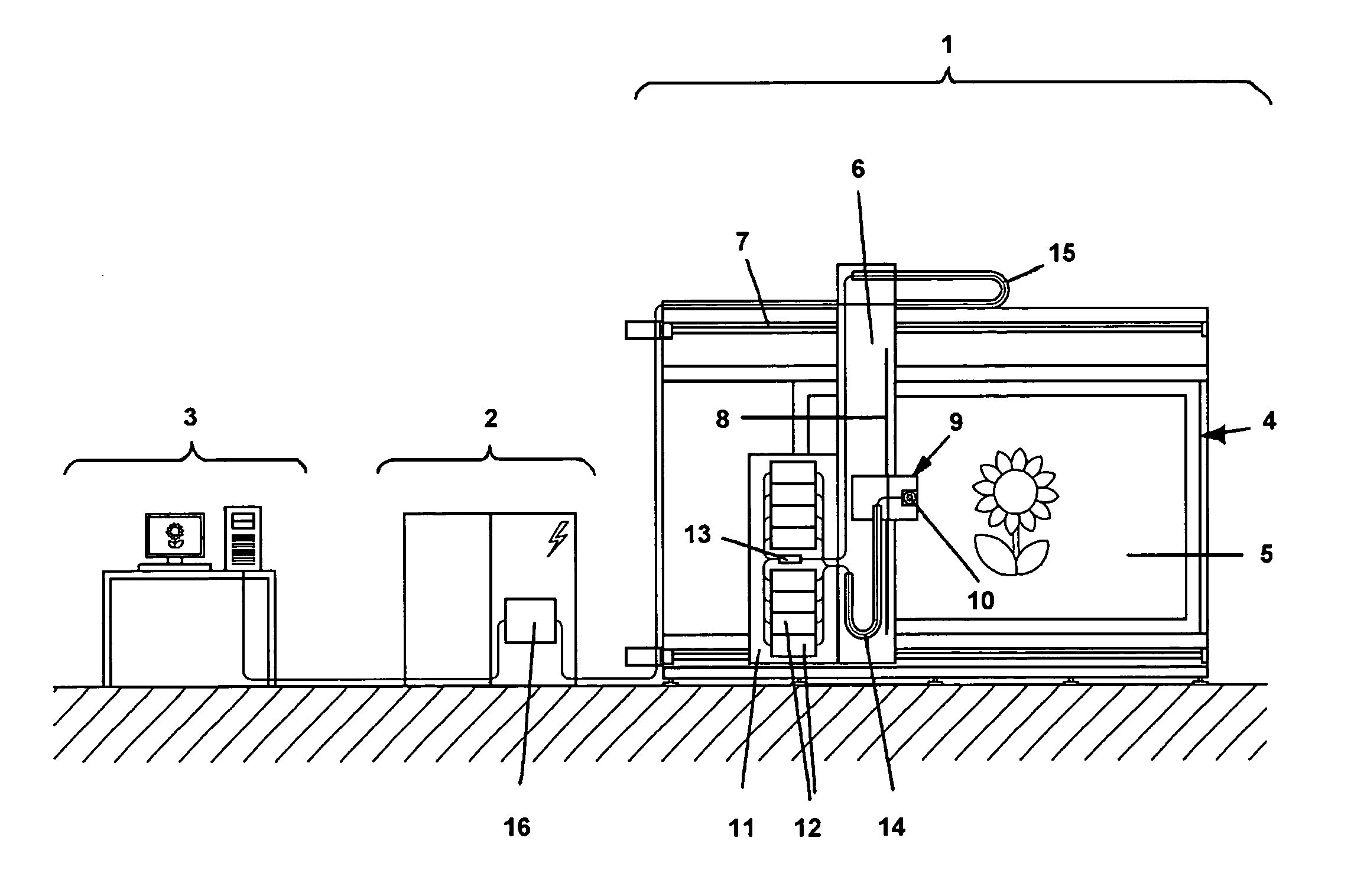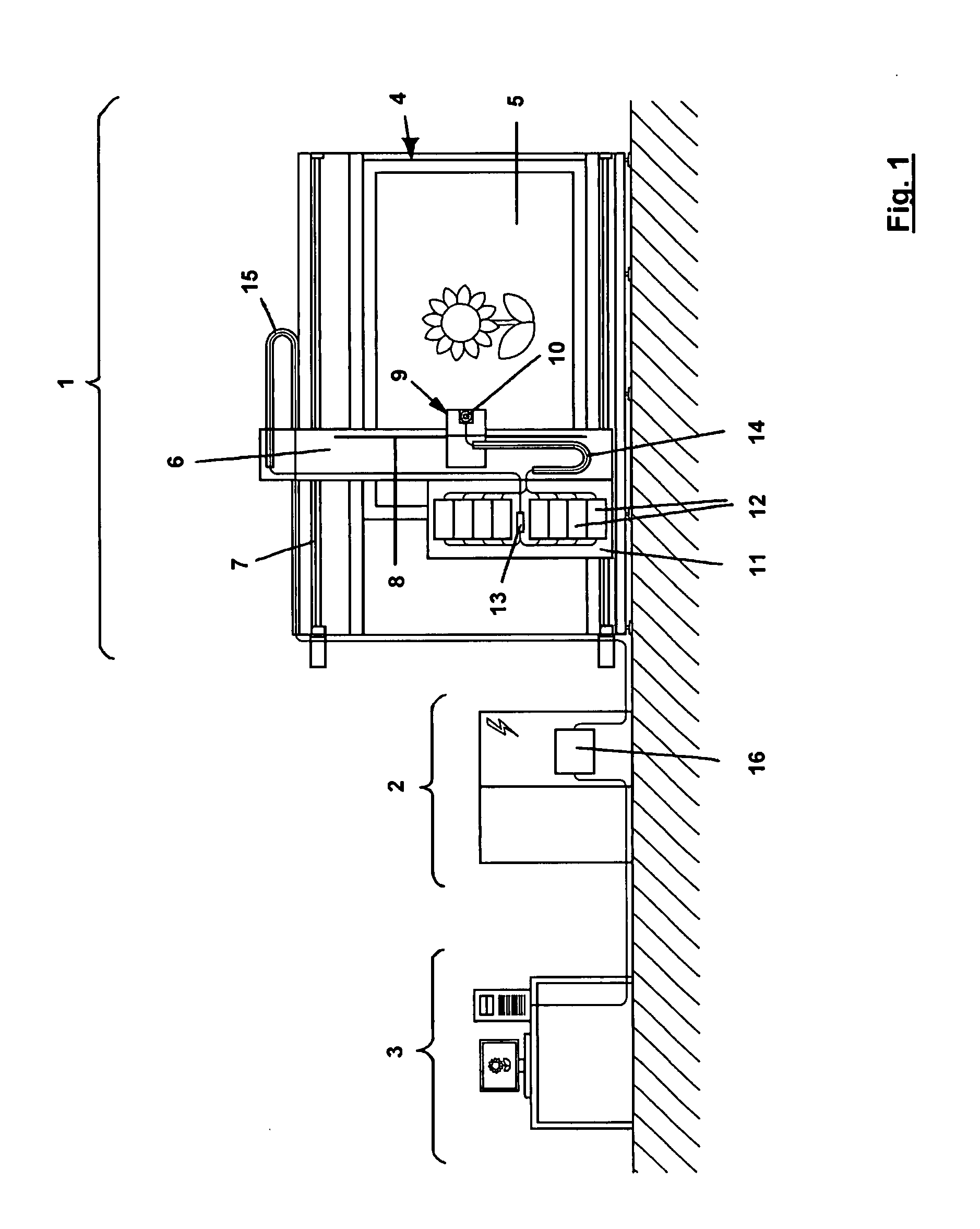Exposure device for the production of screen print stencils
a technology of exposure device and screenprint stencil, which is applied in the direction of optical devices, photomechanical devices, instruments, etc., can solve the problems of severely limiting the “image production speed” of screenprint stencils, and setting limits for dmds, etc., to achieve less expensive, easy maintenance, and less effort
- Summary
- Abstract
- Description
- Claims
- Application Information
AI Technical Summary
Benefits of technology
Problems solved by technology
Method used
Image
Examples
Embodiment Construction
[0022] An exposure device for the production of screen-print stencils is structured using the portal construction method and consists essentially of an exposure unit 1, a control unit 2, and a computer unit 3.
[0023] Exposure unit 1 comprises a vertically disposed processing table having a holder 4 for screen-print stencils 5 (to be exposed). A portal arm 6 can be moved on an X axis guide 7, in an X direction, above holder 4 and the screen-print stencil. An exposure head 9 having a focusing lens system 10 with an auto-focusing device 19 can be moved in a Y direction on portal arm 6, on a Y axis guide 8. The X direction therefore corresponds to the movement direction of portal arm 6. Precision guides and precision drives (not shown) are present both for the movement in the X direction and for the movement in the Y direction.
[0024] An interface part 11 is attached to portal arm 6. Several modules 12 that conduct heat away are situated on interface part 11; they have groups of laser d...
PUM
| Property | Measurement | Unit |
|---|---|---|
| wavelength range | aaaaa | aaaaa |
| frequency | aaaaa | aaaaa |
| power | aaaaa | aaaaa |
Abstract
Description
Claims
Application Information
 Login to View More
Login to View More - Generate Ideas
- Intellectual Property
- Life Sciences
- Materials
- Tech Scout
- Unparalleled Data Quality
- Higher Quality Content
- 60% Fewer Hallucinations
Browse by: Latest US Patents, China's latest patents, Technical Efficacy Thesaurus, Application Domain, Technology Topic, Popular Technical Reports.
© 2025 PatSnap. All rights reserved.Legal|Privacy policy|Modern Slavery Act Transparency Statement|Sitemap|About US| Contact US: help@patsnap.com


